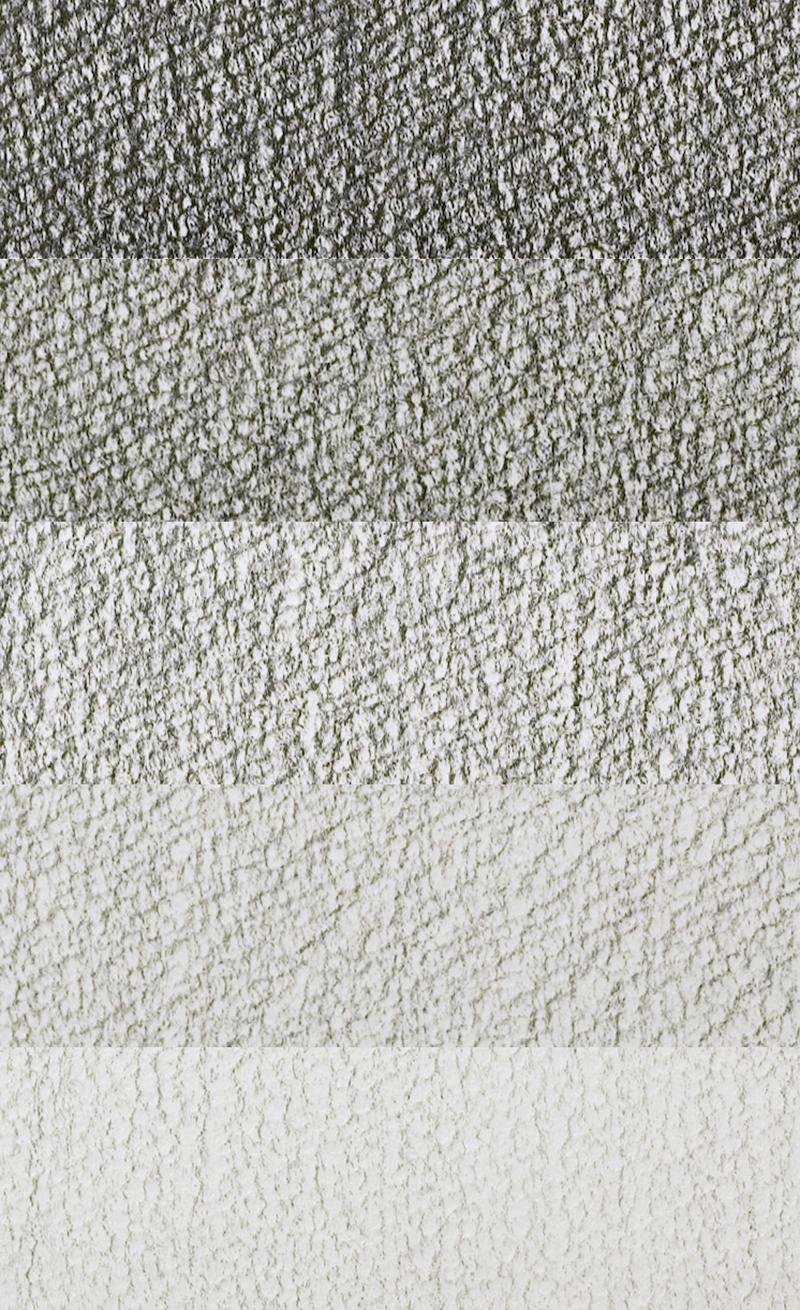Pencils
鉛筆
Enpitsu
Pencils are drawing instruments comprising a solid core of mainly graphite and clay baked in a thin tube and inserted into a wooden sleeve. Pencils have a diverse range of uses including as everyday writing implements, for drawing, Croquis and drafting.
Dark lines with a metallic glint are one of the features of pencils and, because the colored material in the core is fairly hard, the pencil glides smoothly and shades are easily obtained by adding or releasing pressure. There are also different types of core hardness which has a great effect on line density. Pencil cores are a combination of graphite and clay with water added. This material is pulverized and shaped into a thin rod-shaped mold and dried. The material is then fired to around 1,000 degrees and heated oil is allowed to soak in. The hardness of the core is determined by the volume of graphite and clay used in the mix and designated by alphabetic and numeric codes. “H” indicates “Hard” and is typical of hard cores with soft shades. The range “H” to “10H” increases in hardness as the numerical value rises. “B”, which means “Black”, has a soft core with dark shades and the range “B” to “10B” increases in softness as the numerical value rises. “HB” cores have a hardness and shade which is between “H” and “B” and “F”, “Firm”, has a quality that is between “HB” and “B”. “EB”, “Extra Black” and “EE”, “Extra Extra Black”, shades are close to those of the Conté crayon.
When using pencils for drawing, the tips are sharpened with more of the core and wood section shaved than for writing purposes. This enables sharper lines and makes it easy to lay the pencil down and shade wide areas with the side of the core. When beginning to draw, move your arm from the shoulder in large strokes and as you approach the completion, move from the elbow and wrist. When drawing with a pencil, shading and tones are basically achieved by overlaying countless lines but more delicate, complicated effects can be obtained with the use of an eraser or kneaded eraser as well.
Gold, silver, copper, lead and other metal points have been used since antiquity. However, with the discovery of graphite in the Borrowdale mines in England in 1564, Frenchman, Nicolas-Jacques Conté invented the fundamentals for today’s pencil-making methods in 1795. Being easy to use and having little discoloration, their use spread worldwide. Given to Tokugawa Ieyasu in the early Edo period, they were called “bokuhitsu” and went into production in Japan in 1889.
Since pencils do not contain any ingredients to fix the color to the surface, the colors are easily removed from a drawing. A fixative is recommended after the drawing is complete.
Pencils can be purchased at art stores and stationery shops.

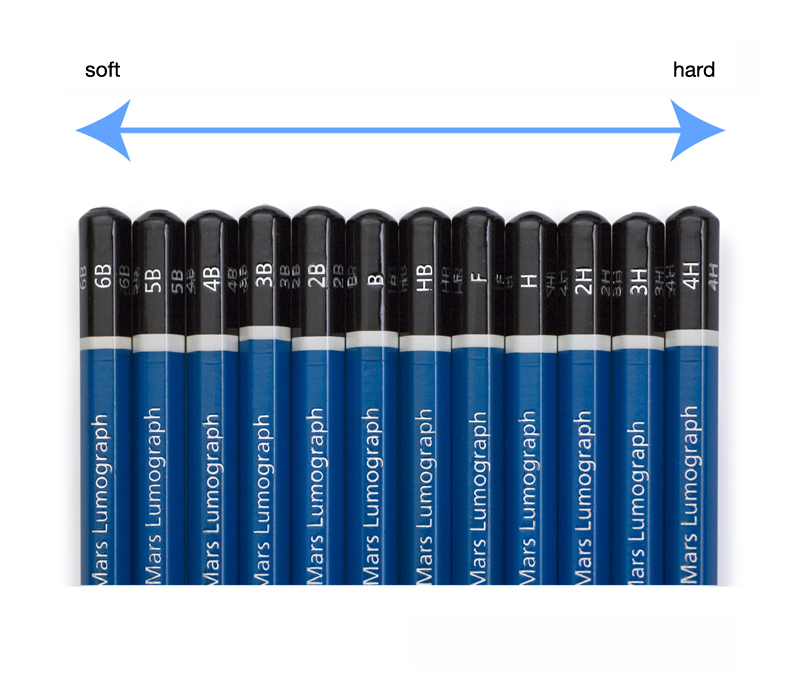 Pencil hardness types
Pencil hardness types- How to hold a pencil
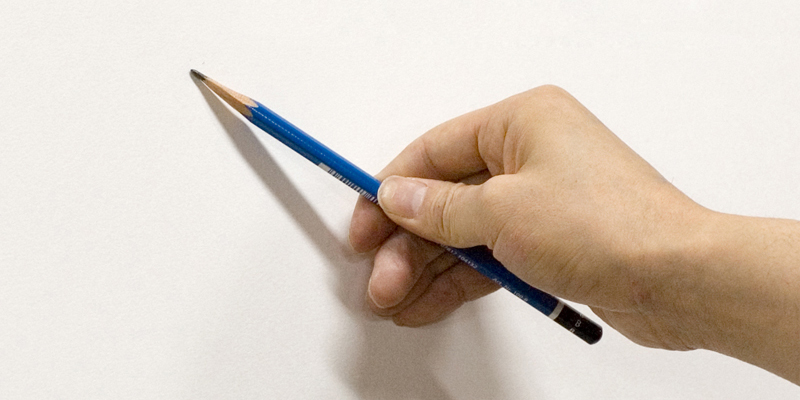 When making broad strokes
When making broad strokes 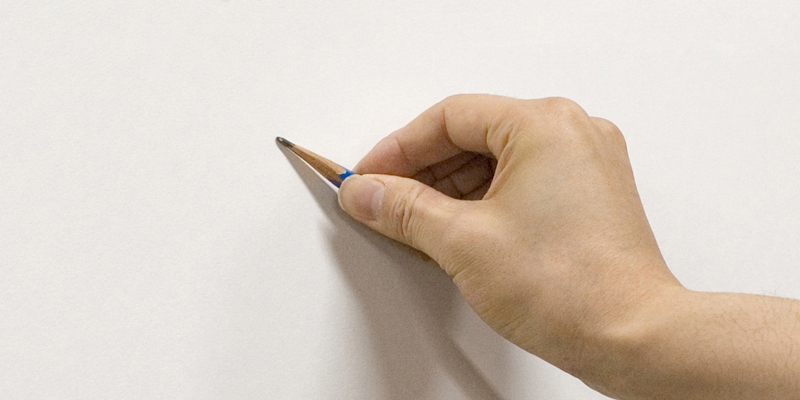 When filling
When filling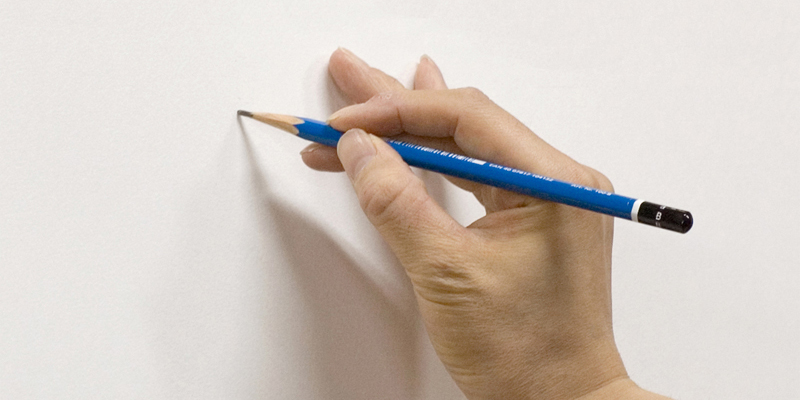 When adding details
When adding details- Tips
 Use pencils of different hardness to get the right graphite length and sharpness
Use pencils of different hardness to get the right graphite length and sharpness - Drawing with a pencil on Sunflower M paper
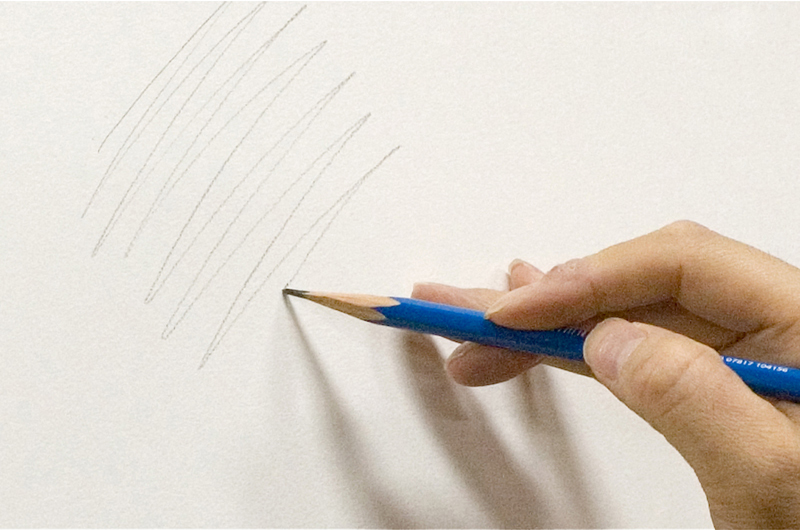 Making lines with the tip of the graphite
Making lines with the tip of the graphite 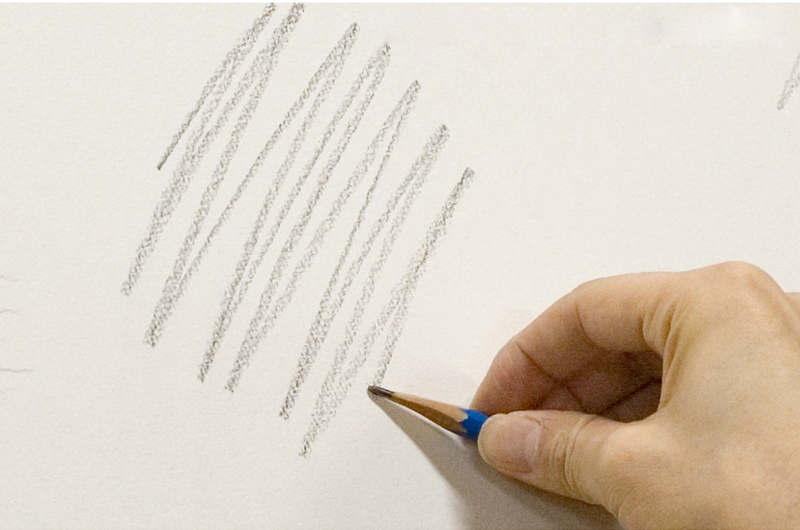 Making lines with the side of the graphite (with the pencil laying against the paper)
Making lines with the side of the graphite (with the pencil laying against the paper)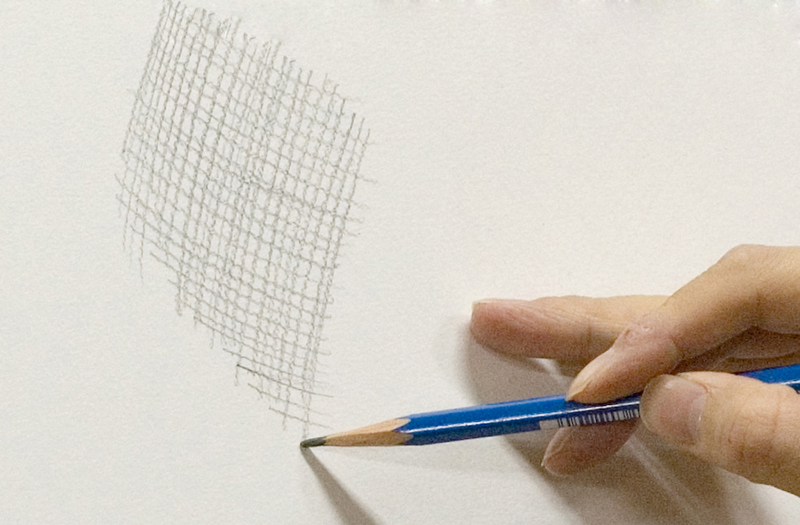 Crosshatching
Crosshatching Drawing with pencils of different hardness
Drawing with pencils of different hardness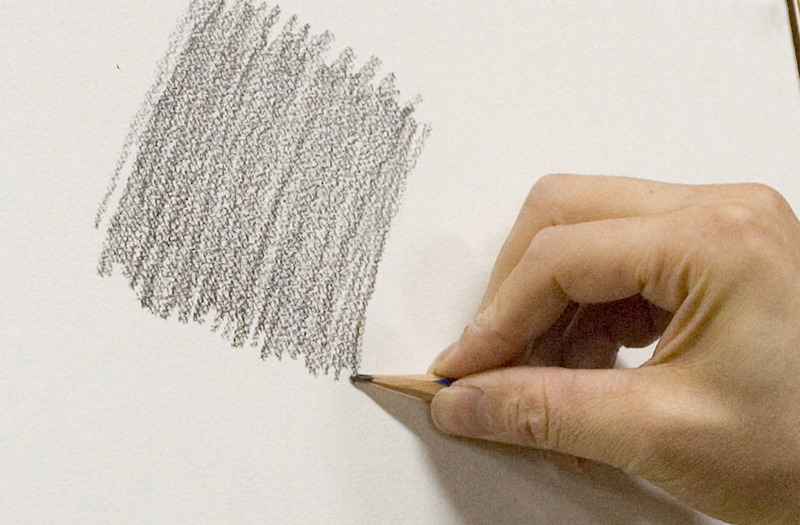 Filling with a heavy tone
Filling with a heavy tone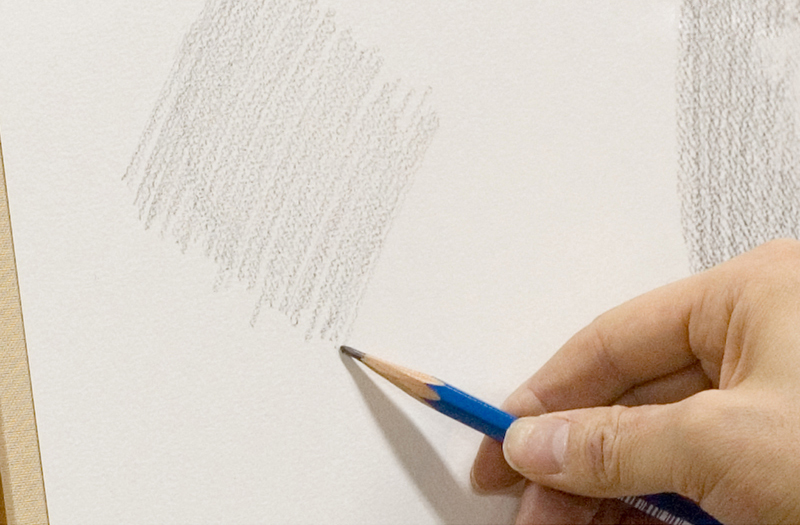 Filling with a light tone
Filling with a light tone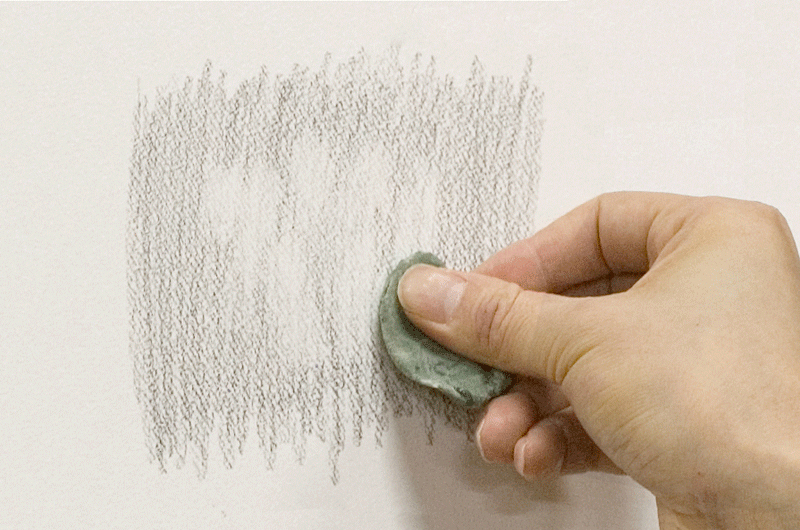 Making white areas with a kneaded eraser
Making white areas with a kneaded eraser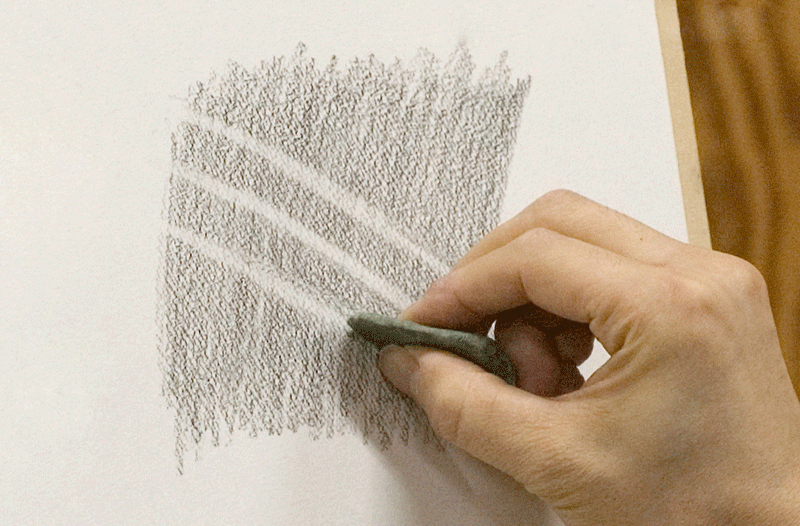 Making lines with a kneaded eraser
Making lines with a kneaded eraser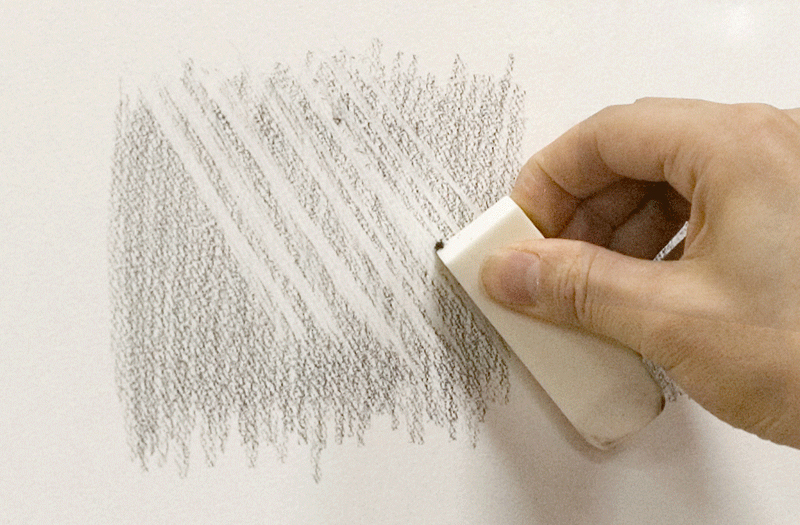 Making lines with an eraser
Making lines with an eraser- Drawing with pencils of different hardness on Sunflower M paper
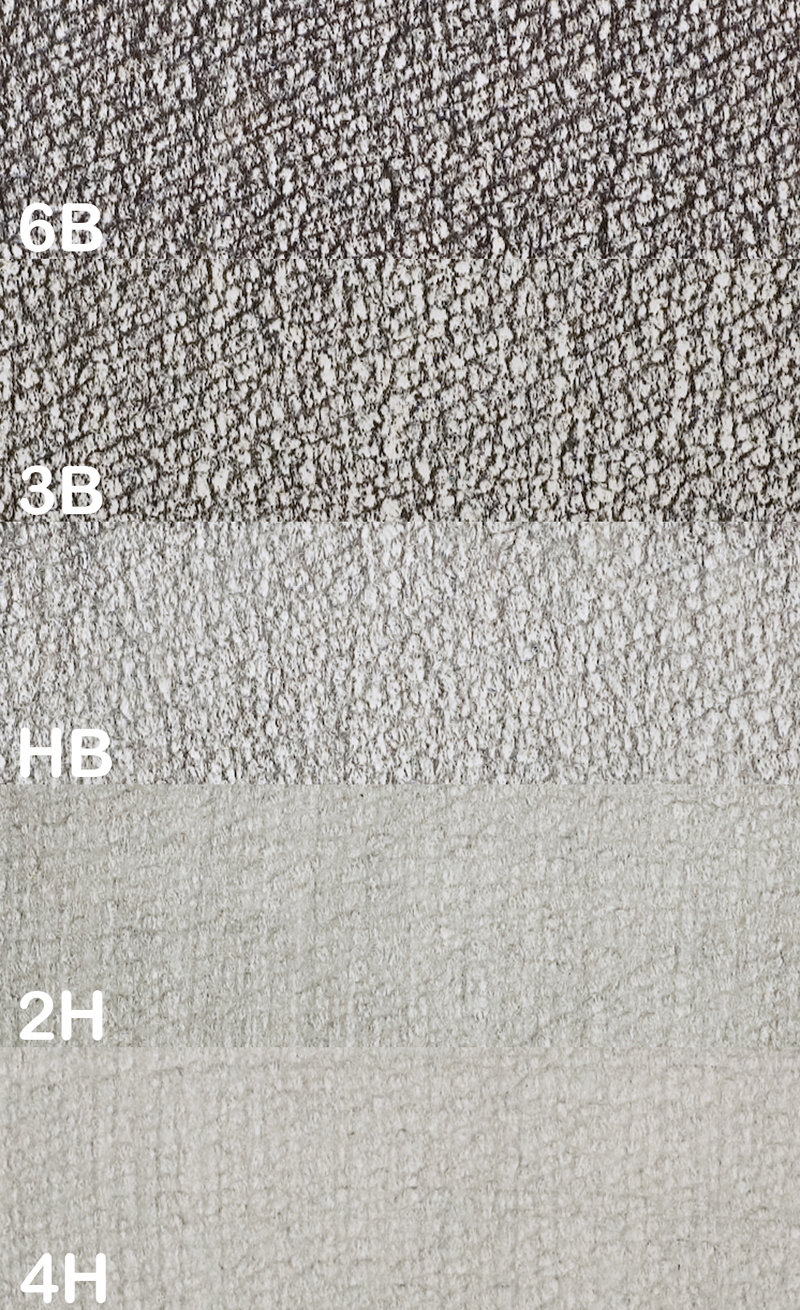
- Drawing with pencil B on Sunflower M paper
